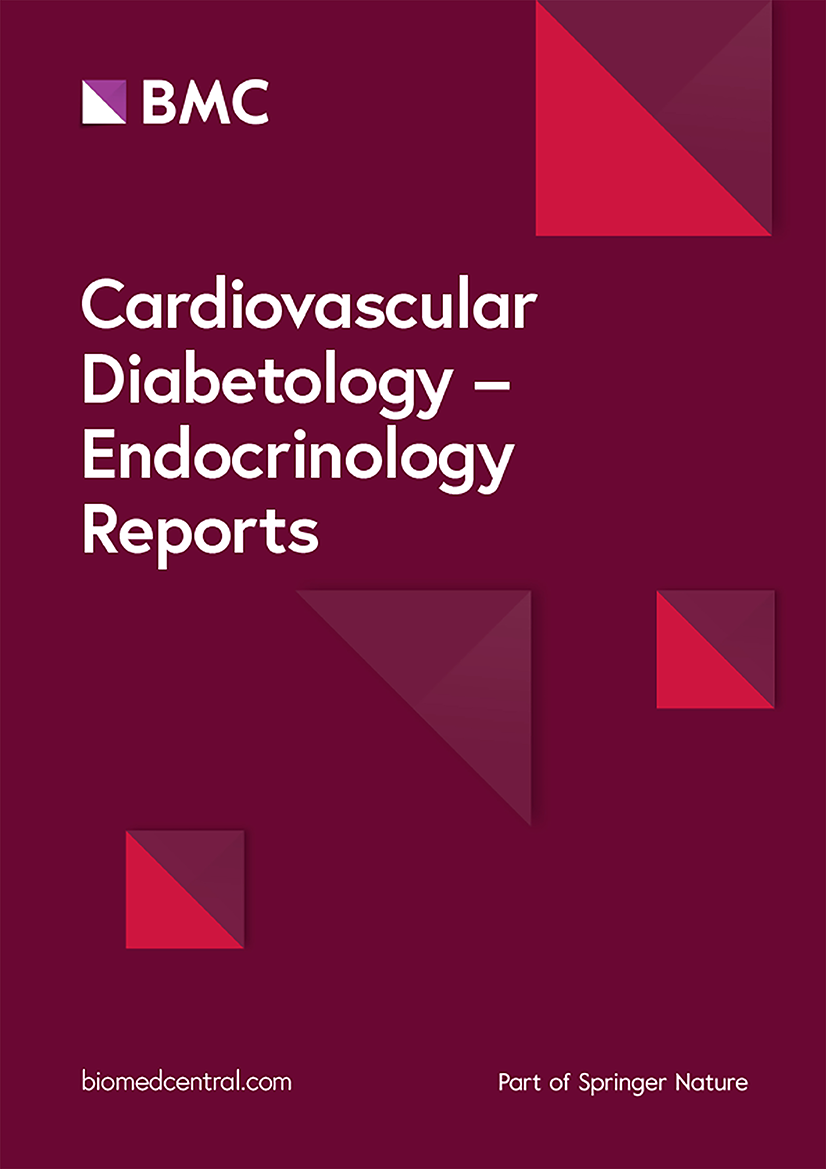From Needles to Pills: The New Era of Weight-Loss Medicine
Published in Biomedical Research, General & Internal Medicine, and Pharmacy & Pharmacology

Two major studies just published in The New England Journal of Medicine revealed that new oral GLP-1 medications can help people lose more than 10% of their body weight — results once thought possible only with injections. These findings mark a turning point in obesity care, as described in this recent article “From needles to pills: oral GLP-1 therapy enters the obesity arena” published in Cardiovascular Diabetology – Endocrinology Reports.
Why Obesity Treatment Needed a Makeover
More than one billion people worldwide live with obesity, a condition that increases the risk of diabetes, heart disease, liver disease, and even certain cancers.
While healthy eating, exercise, and surgery all have important roles, many people struggle to achieve or maintain meaningful weight loss through these methods alone.
Until recently, medications for obesity were modest in their effects. That changed with GLP-1 receptor agonists — a class of drugs originally used for diabetes that work by reducing appetite and slowing digestion. Injectable versions, like semaglutide (Wegovy) and tirzepatide (Zepbound), helped people lose 15–20% of their body weight in clinical trials, transforming what doctors thought was possible.
But injections aren’t for everyone. They can be costly, inconvenient, and intimidating. Many patients simply don’t want to give themselves a shot once a week.
That’s where oral GLP-1 therapies come in.
Meet the Pills: Orforglipron and Oral Semaglutide
The two new studies — called ATTAIN-1 and OASIS-4 — tested oral versions of GLP-1 drugs in people with obesity who did not have diabetes.
-
Orforglipron (ATTAIN-1):
Over 3,000 adults took the pill daily for 72 weeks. On average, participants lost 11.2% of their body weight — roughly 25–30 pounds for someone starting at 250 pounds. More than half lost at least 10%. The pill also improved blood pressure, cholesterol, and waist size. -
Oral Semaglutide 25 mg (OASIS-4):
In a smaller study of 307 adults, participants lost an average of 13.6% of their weight. Metabolic measures like blood sugar and triglycerides also improved.
Both drugs had side effects typical of the GLP-1 family — mostly nausea or stomach upset — but were generally well tolerated.
For the first time, people may soon have a pill that matches the power of the injectables.
Why This Matters
This shift from needles to pills could make effective obesity treatment available to millions more people. Pills are easier to take, simpler to store, and may carry less stigma than injections. For some, this convenience could be the difference between starting and skipping treatment.
However, there are still questions to answer.
-
Cost and insurance coverage remain uncertain. If oral GLP-1 drugs are priced like injectables, many patients may still face high out-of-pocket costs.
-
Adherence may vary. For example, oral semaglutide must be taken on an empty stomach with only a small amount of water — and no food or drink for 30 minutes afterward.
-
Long-term safety and effectiveness will need to be monitored over years, not just months.
A Pill With Promise — and Perspective
Experts urge “cautious optimism.” While the results are exciting, oral GLP-1s aren’t magic bullets. Obesity is a complex, chronic condition influenced by biology, environment, and behavior. Medication works best when combined with healthy lifestyle changes and medical support.
Still, this moment feels historic. For the first time, science is delivering a pill that can achieve weight loss once thought possible only with surgery or injections.
If the next few years confirm these early results, oral GLP-1 therapies could become a cornerstone of modern obesity care — helping more people get treatment that fits their lives.
The Bottom Line
The shift from needles to pills is more than a convenience; it’s a chance to break down barriers in obesity treatment. With oral GLP-1s like orforglipron and high-dose semaglutide on the horizon, patients and doctors now have more options than ever before — and that’s a powerful step toward a healthier future!
Follow the Topic
-
Cardiovascular Diabetology – Endocrinology Reports

This is an official companion journal to Cardiovascular Diabetology and is an open access journal publishing on clinical, translational and basic science aspects of endocrinology.
-
Cardiovascular Diabetology

This journal considers manuscripts on all aspects of the diabetes/cardiovascular interrelationship and the metabolic syndrome; this includes clinical, genetic, experimental, pharmacological, epidemiological and molecular biology research.
Your space to connect: The Primary immunodeficiency disorders Hub
A new Communities’ space to connect, collaborate, and explore research on Clinical Medicine, Immunology, and Diseases!
Continue reading announcementRelated Collections
With Collections, you can get published faster and increase your visibility.
Organoids as emerging models in diabetes and cardiovascular research
Organoids—three-dimensional structures derived from stem cells—are transforming biomedical research by modeling key aspects of human physiology and disease. By replicating native tissue architecture, cellular heterogeneity, and functional behavior, they provide human-relevant systems that address limitations inherent to conventional in-vitro and animal models.
Diabetes and cardiovascular disease are deeply interconnected conditions, characterized by shared, multi-organ pathophysiology. Organoid technologies offer unique opportunities to dissect disease mechanisms, evaluate therapeutic strategies, and develop personalized, physiologically relevant models. These systems enable the investigation of cardiometabolic processes in platforms that better reflect the complexity and progression of human disease.
Cardiovascular Diabetology welcomes original research articles, reviews, and meta-analyses for this Collection, which aims to highlight the use of organoid technologies in advancing our understanding of cardiovascular complications associated with diabetes.
Areas of interest include, but are not limited to:
- Organoid models of diabetic cardiomyopathy and heart failure
- Matrigel alternatives for organoid development
- Cell-cell and extracellular matrix interactions in organoids
- Organoid-based drug testing for cardiovascular diseases
- Organoid-on-chip systems for tissue crosstalk and perfusion3D bioprinting and tissue engineering for cardiovascular organoids
- Artificial intelligence–driven analysis of organoid function and phenotypes
- Organoid models of gestational diabetes–induced congenital heart disease
- Functional genomics using CRISPR in cardiovascular organoids
- Single-cell and spatial omics to map disease states in organoids
- Co-culture systems of vascular and pancreatic organoids to study metabolic-vascular crosstalk
- Organoid-based screening platforms for anti-diabetic and cardioprotective drugs
Submissions that contribute to conceptual clarity (e.g., distinctions between organoids and spheroids), incorporate multi-organ or metabolic system perspectives, or connect technological development with clinical or translational insights are especially welcome.
This Collection supports and amplifies research related to SDG 3, Good Health and Well-Being.
All submissions in this collection undergo the journal’s standard peer review process. Similarly, all manuscripts authored by a Guest Editor(s) will be handled by the Editor-in-Chief. As an open access publication, this journal levies an article processing fee (details here). We recognize that many key stakeholders may not have access to such resources and are committed to supporting participation in this issue wherever resources are a barrier. For more information about what support may be available, please visit OA funding and support, or email OAfundingpolicy@springernature.com or the Editor-in-Chief.
Publishing Model: Open Access
Deadline: Apr 07, 2026
Cardiometabolic and Hepatic Interconnections: From Mechanisms to Clinical Implications
Cardiometabolic and liver diseases are no longer viewed as isolated entities. Growing evidence shows that hepatic and cardiovascular dysfunctions are tightly interconnected through shared metabolic, inflammatory, hemodynamic, and hormonal pathways. This crosstalk shapes disease trajectories and opens opportunities for integrated diagnostics and therapies.
Key interconnections include:
- Insulin resistance. The liver is pivotal for glucose and lipid homeostasis. Hepatic insulin resistance drives excess glucose production and dyslipidemia, contributing to the cardiovascular–kidney–metabolic (CKM) syndrome.
- Metabolic dysfunction–associated steatotic liver disease (MASLD). Highly prevalent in obesity and metabolic syndrome, and especially common in type 2 diabetes (T2D), which bears the highest MASLD burden. Progression to steatohepatitis or fibrosis markedly increases atherosclerotic risk.
- Liver-derived factors. Hepatokines (e.g., FGF21) and extracellular vesicles influence cardiac tissue, vascular tone, and systemic metabolism, potentially amplifying inflammation, oxidative stress, and lipotoxicity across organs.
- Systemic inflammation and lipotoxicity. Visceral adipose tissue and the liver release inflammatory cytokines and triglyceride-rich lipids, promoting endothelial dysfunction and perpetuating metabolic disturbances.
- Dyslipidemia. Elevated triglycerides and LDL, with reduced HDL, accelerate atherogenesis and cardiovascular risk.
- Hemodynamic and metabolic stress. Heart failure can cause hepatic congestion and hypoperfusion, while advanced liver disease can precipitate cirrhotic cardiomyopathy and arrhythmias, even in the absence of prior heart failure.
In summary, hepatic and cardiometabolic systems are functionally and pathologically intertwined: liver dysfunction worsens cardiovascular and metabolic health, and cardiometabolic disturbances accelerate hepatic pathology.
This Collection welcomes original research articles, reviews, and meta-analyses focused on this reciprocal relationship. Given the high prevalence of MASLD in T2D, we especially encourage submissions at the T2D–MASLD–cardiovascular interface. Addressing hepatic and cardiometabolic health in parallel is essential for effective risk reduction and patient care.
This Collection supports and amplifies research related to SDG 3, Good Health and Well-Being.
All submissions in this Collection undergo the journal’s standard peer review process. Similarly, all manuscripts authored by a Guest Editor(s) will be handled by the Editor-in-Chief. As an open access publication, this journal levies an article processing fee (details here). We recognize that many key stakeholders may not have access to such resources and are committed to supporting participation in this issue wherever resources are a barrier. For more information about what support may be available, please visit OA funding and support, or email OAfundingpolicy@springernature.com or the Editor-in-Chief.
Publishing Model: Open Access
Deadline: Jul 15, 2026





Please sign in or register for FREE
If you are a registered user on Research Communities by Springer Nature, please sign in